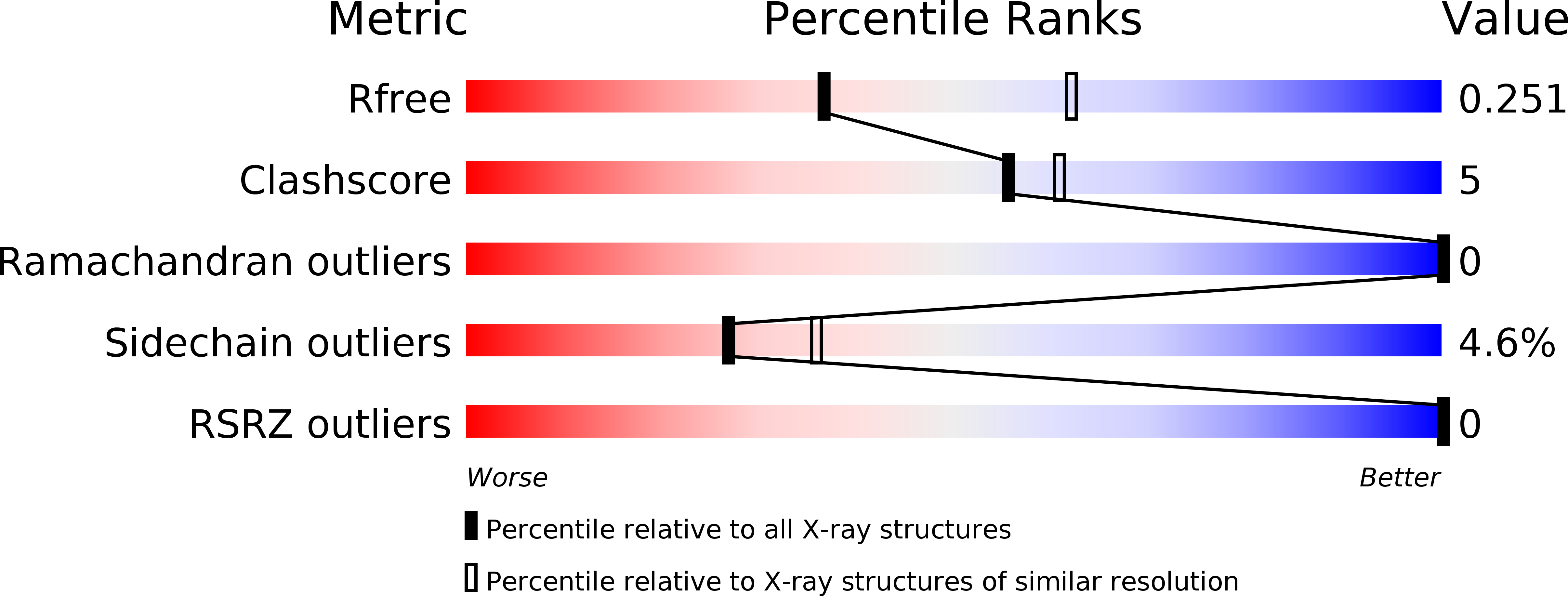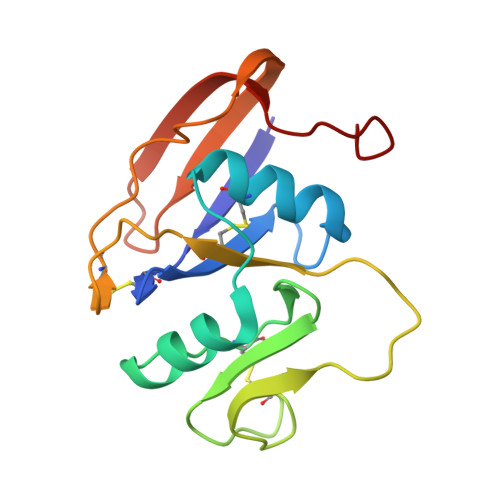Fragment-Based Identification of an Inducible Binding Site on Cell Surface Receptor CD44 for the Design of Protein-Carbohydrate Interaction Inhibitors.
Liu, L.K., Finzel, B.C.(2014) J Med Chem 57: 2714-2725
- PubMed: 24606063
- DOI: https://doi.org/10.1021/jm5000276
- Primary Citation of Related Structures:
4MRD, 4MRE, 4MRF, 4MRG, 4MRH, 4NP2, 4NP3 - PubMed Abstract:
Selective inhibitors of hyaluronan (HA) binding to the cell surface receptor CD44 will have value as probes of CD44-mediated signaling and have potential as therapeutic agents in chronic inflammation, cardiovascular disease, and cancer. Using biophysical binding assays, fragment screening, and crystallographic characterization of complexes with the CD44 HA binding domain, we have discovered an inducible pocket adjacent to the HA binding groove into which small molecules may bind. Iterations of fragment combination and structure-driven design have allowed identification of a series of 1,2,3,4-tetrahydroisoquinolines as the first nonglycosidic inhibitors of the CD44-HA interaction. The affinity of these molecules for the CD44 HA binding domain parallels their ability to interfere with CD44 binding to polymeric HA in vitro. X-ray crystallographic complexes of lead compounds are described and compared to a new complex with a short HA tetrasaccharide, to establish the tetrahydroisoquinoline pharmacophore as an attractive starting point for lead optimization.
Organizational Affiliation:
Department of Medicinal Chemistry, University of Minnesota , 308 Harvard Street SE, Minneapolis, Minnesota 55455, United States.
















